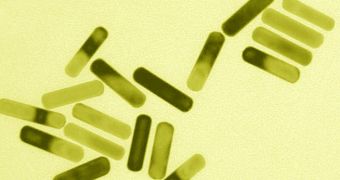Chemotherapy and radiation are currently still the preferred approaches to treating cancer, but they cause a lot of damage to healthy cells as well. Now, researchers are working on replacing these treatments with nanoparticles capable of carrying drugs.
There are numerous downsides to using these approaches, such as for example the fact that they destroy equally-large amounts of healthy cells as they do cancerous ones.
This happens because the drugs cannot be targeted to tumors too specifically. Therefore, they also harm the surrounding tissues, causing permanent damage. Researchers are therefore trying to fix this targeting issue.
Nanoparticles are a promising avenue of research in this direction, believe experts at the Massachusetts Institute of Technology (MIT). Numerous science teams around the world are working on this around the clock.
Some of the approaches are doomed to fail, but the general opinion in the international scientific community is that this is the way to go forward.
“Chemotherapy and radiation and surgery are what we have now, but nanotechnology is emerging as an approach that complements the existing [arsenal] of clinical tools to have a significant impact,” explains Sangeeta Bhatia.
She is the MIT Wilson Professor of Health Sciences and Technology and Electrical Engineering and Computer Science, and also holds a dual appointment as a physician and engineer at the Institute.
The expert says that nanotechnology could conceivably be used to administer larger doses of chemicals to cancer tumors, thus increasing the efficiency of drugs. As the drugs attach to tumor cells, they will avoid affixing themselves to healthy cells, thus reducing the number of side-effects.
“As nanoscience began to evolve and we became adept at creating our own nanoparticles, we found ways to specifically design nanoparticles so they had properties we wanted,” adds Paula Hammond.
The researcher is the Bayer Professor of Chemical Engineering at MIT and a member of the David H. Koch Institute for Integrative Cancer Research.
She says that some nanoparticles are designed in such a manner that they only release their load in the acidic pockets that form on the surface of cancerous cells. Healthy cells don't feature such structures, so they are speared.
Within the next 3 to 5 years, nanotechnology could become an important player in cancer therapies, Hammond believes. She says that the field is advancing at a fast pace, and that breakthroughs in cancer research are just beyond the corner.
However, there are also risks associated with this approach, given that the impact of some nanoparticles on the human body has yet to be fully analyzed.
But “I think it provides way too many benefits for us to pull away from it,” Hammond says of using this method for targeting tumors.

 14 DAY TRIAL //
14 DAY TRIAL //